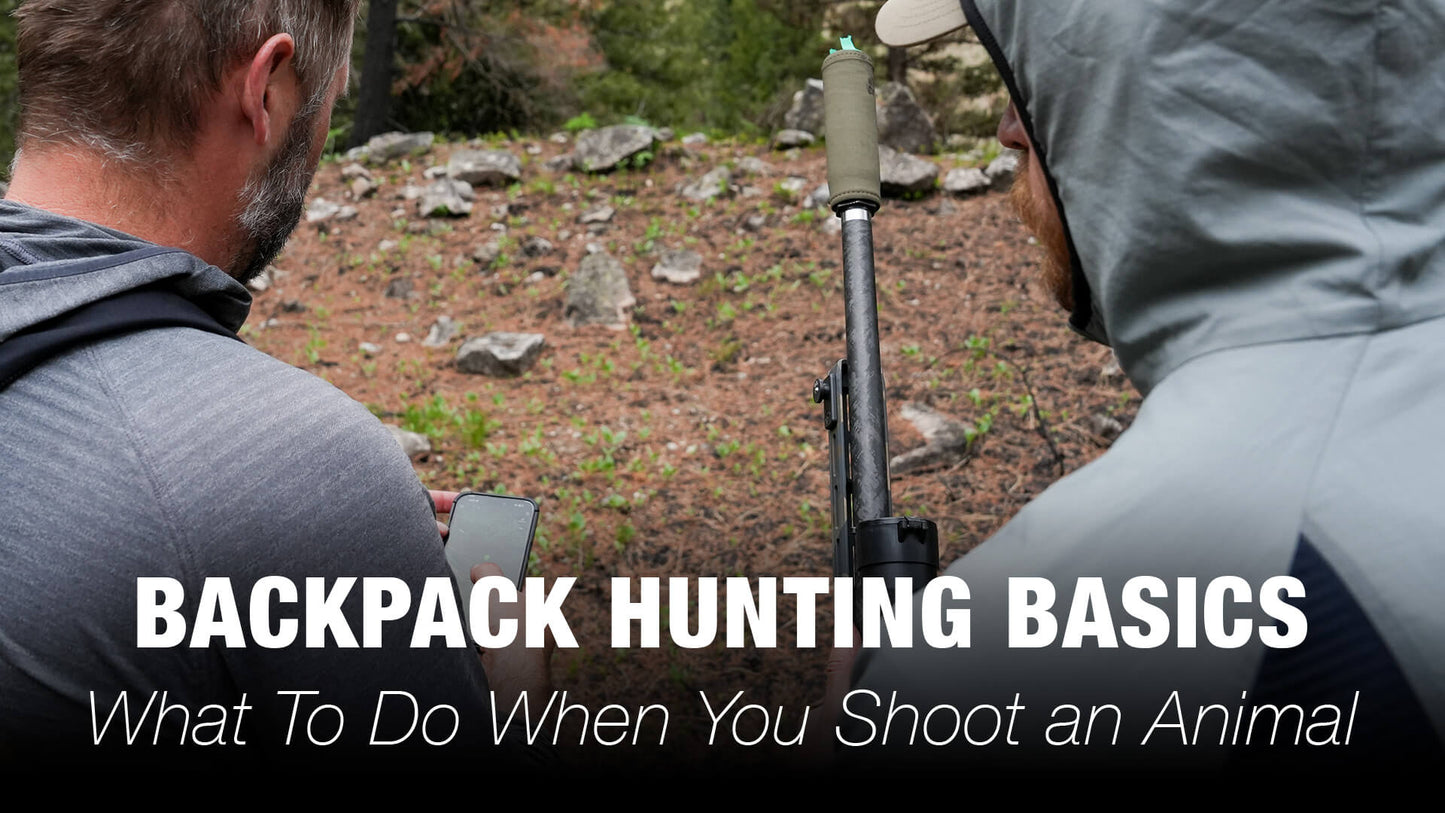
The hunt doesn't end when you shoot an animal. Immediately after the shot, there are important decisions to make and steps to take. Amidst the adrenaline and excitement, take a breath, take a moment, and make a plan.
In this video, we explain some of the first things to do after you shoot an animal.
ASSESS THE SITUATION
First things first, assess the situation. Is the animal dead, alive, or is that unknown? Do you see the animal? Were there aspects of the shot, the impact, or the animal’s reaction that could provide insight into the animal’s condition or how far the animal may have traveled? If it traveled away at impact, in which direction did it head? Are there any specific reasons it could have gone that direction?
Take an assessment of the situation to help guide your next course of action.
MAKE THE WEAPON SAFE
Unless you will be making immediate follow-up shots, make your weapon safe. As you start to move around — either to gather your things and recover the animal, or to prepare to track and continue to hunt the animal — ensure that safety remains THE priority for whatever comes next.
MARK THE SPOT(S)
We always use onX Hunt to drop a waypoint where the shoot took place. And if the shot distance was outside of bow-range, we generally mark both the location of the shooter, as well as the location of the animal upon the shot.
These waypoints are helpful references as you begin to move and experience a change in perspective as you track or recover the animal. And they are great historical references to look back upon in the future, as data points for “past” hunts.
MAKE A PLAN
Based on everything we covered so far, now you need to make a plan to recover or track the animal.
Should you move immediately or wait for a while before pursuing the animal? Before you begin to move, do you have a clear plan of direction, with landmarks noted for reference points to guide you? ("The buck ran past that tallest tree on the left side of the opening, just above the large rock.") And are there unique conditions that require your attention, such as getting your headlamp out before light fades to darkness?
GATHER YOUR GEAR
Finally, before you move, make sure you have all your gear. Do you have your optics, your rangefinder, or any other miscellaneous gear that you may have set out in the “yard sale” that may have been made before you shot? We have learned this lesson the hard way.
MARK YOUR WAY
Finally, before you move, turn on tracking in onX Hunt, or with a similar app/device. This is an essential step if the animal’s location or condition is unclear and you may be tracking or blood-trailing the animal to recover it.
These are basic, yet important steps to take when you first shoot an animal. If you don’t remember every step we outlined here, at least remember to pause, think, and act purposefully — and don’t be in a rush to move out of excitement (or nervousness), without intentionality.
